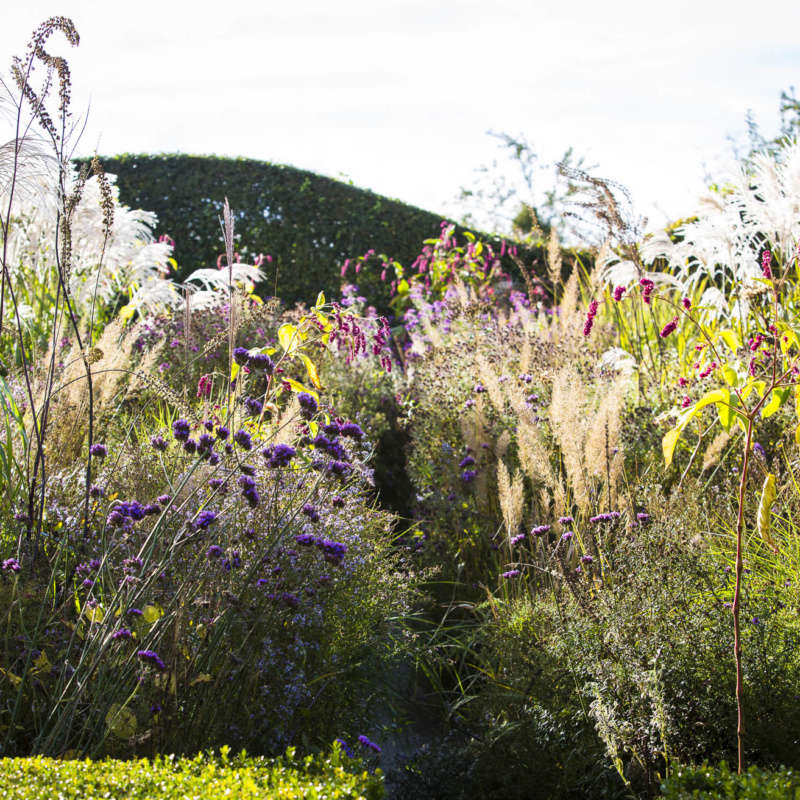If you live in a place blessed with an abundance of lilac (perhaps outside your front door, or in the fields and hedgerows of New England where it has naturalized rampantly), gather a basketful and take it home to submerge in honey. Steeping lilac flowers for two days yields an evocative lilac honey that carries the scent of late spring and early summer far beyond those seasons’ borders. Drizzle it over toast for breakfast, into hot black tea, or onto your favorite triple cream brie. A sparing trickle of lilac honey across a fresh carrot salad, or over the surface of a piping hot pizza littered with fresh, peppery green arugula and tenderly melted mozzarella, are three-second flourishes that will create story-worthy meals.
Photography by Marie Viljoen, unless noted.


There are many species of lilac; the shrub referenced in this story is Syringa vulgaris, which is native to Eastern Europe. It is one of the earliest colonial horticultural introductions to the United States. While it is hard to hate such a beautiful and storied shrub, lilac is now invasive in several US states, including Maine and much of New England. Canada, too, classifies it as “highly invasive” and Germany has blacklisted the species, which has escaped into the wild in Central and Western Europe.

Collect lilac flowers at any time of day except when the shrubs are wet. Rain and dew tend to strip the flowers temporarily of nectar and perfume, and perfume is what you are looking to capture in an infused honey. If in doubt, push your face into a cluster of flowers and inhale.

While snipping politely with secateurs is usually best practice when harvesting flowers on woody stems, I find that lilac flowers last much longer in water when their stems are snapped from the main stems; this may be because the torn surface absorbs more water in a vase or bowl than a narrower, cut area. Also, if you re-cut those stems at home, the flowers are more likely to wilt quickly. It’s taken me many farmers’ market bunches, and many sad wilts, to work this out. So judge the stem-length well in the field, or in your garden, and collect accordingly.
Once home, submerge the stems up to their necks (just below where the flower panciles begin) in cool water.

In water, lilacs should keep fresh for at least three days, so you have some wiggle room in terms of planning your honey infusion. (Remember not to re-cut the stems after collecting them.)

The honey I use for my annual lilac infusion comes from a small roadside stand near Brooksville, Maine. Cash goes into a waiting jar, and you take the change you need. I usually buy two 32-ounce jars of honey.









Lilac Honey
This recipe can easily be halved, although I generally make double this amount. Before starting, do not wash your lilac: water will dilute the honey as well as the flowers’ scent. Wet flowers will also encourage fermentation of the jarred honey (which is not a bad thing, necessarily, but you are not looking to make mead—that is another story!). For the honey, choose any pourable honey and avoid strongly flavored honeys like powerful chestnut and buckwheat.
1 cup of plucked flowers = about 3 to 4 panicles (or “heads”) of lilac. Plan accordingly while gathering. The size of individual panicles varies, so this is a rough guideline.
- 4 packed cups lilac flowers
- 32 ounces honey
Place the flowers in a bowl or large measuring jug and pour the honey over them. Stir to blend (the handle of a wooden spoon works well to move the thick mixture). Cover, and leave out at room temperature. The next day, the flowers will have risen to the top and started to oxidize a little. Stir again, and cover. After 48 hours strain the honey into a large bowl through a fine mesh sieve. Let the flowers sit in the sieve for at least an hour to gather as much leftover honey trapped around them, as possible.
Return the strained honey to its original jar/s or bottle in fresh, clean ones. You will have lost a little of the original volume.
Make creative use of the leftovers by sloshing some good gin over the remaining, honeyed flowers. Stir, strain, and bottle this lilac honey gin. And if alcohol is not your thing, pour hot black tea over the leftover flowers, strain, and transfer to the fridge to sip cut with chilled sparkling water and lemon for a refreshing mocktail.
See also:
- 11 Favorites: Edible Flowers of Spring
- Lilac Love: A Guide to Spring’s Best-Loved Flowering Shrub
- Raid Your Lawn for Your New Favorite Herb: Ground Ivy












Have a Question or Comment About This Post?
Join the conversation